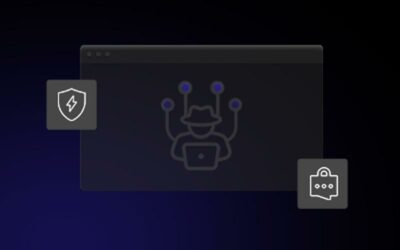It is quite evident that the world is increasingly shifting towards remote working. While working remotely has its own advantages – it gives the flexibility and freedom of working independently and offers the opportunity to benefit from the skills and expertise of professionals from anywhere around the globe – it has some inherent threats as well. The integrity of the project is at stake when there is a threat to data security.
Previously when there were private data centers where people used to develop software and applications, they could control their data security by securing sensitive data behind firewalls and the on-site workstations. With the emergence of cloud technology, everything shifted to a scalable online platform. Everyone embraced cloud storage due to the numerous benefits it had to offer. However, in remote projects where everyone is working from a different location and communications are happening online, the security of information becomes way more susceptible to data breaches.
If you’re managing your projects remotely, you need to make sure that you’re implementing best security practices in order to establish a secure work environment. Cybercriminals know how to mess things up – they have the ability to wreak havoc on your confidential data in the subtlest of ways by using social engineering, phishing, malware, and various other unethical processes. You need to be well-aware of how to secure your systems, and hence we’ll be sharing several tips that can help you achieve that.
ROBUST PASSWORD MANAGEMENT
Remote working allows employees to work from wherever they want. Someone might be working for you perhaps from a café and handling your client far away who has a business of electrical components and crimping tools. Or perhaps another employee is your lead developer for your top clients. In all your projects, there’s important business data involved that needs to be secured. So, you need to ensure that all the data on everyone’s devices and systems is password-protected.
Now, using passwords doesn’t just mean setting some random combination of characters that include letters, digits, and special symbols and using them continuously without ever giving a thought to change them. Password management is an important practice that can be done using a good password manager. This will not only help you in generating passwords randomly but will also store them in a safe manner. And in cases where passwords are required, a good option is to use passphrases.
MULTI-FACTOR AUTHENTICATION
To save your data from viruses, phishing attempts, hacking, and other types of cybercrimes, two-factor or multi-factor authentication is another effective data security solution. It involves using a combination of factors like your password or PIN, phone or a smart card, and additionally sometimes your identity such as a biometric characteristic for enhanced security. If you’re managing remote projects, you can consider incorporating MFA in your work setup.
MFA gives you improved security by providing unique one-time passwords for each login attempt or transaction. It offers more flexibility in terms of remote teams being able to access the main company servers without any threats to security being compromised. This, in turn, enhances the productivity of remote teams as there’s no hindrance in accessing critical systems at any time. Lastly, it also reduces your operational costs as employees can access servers and databases from their devices in a completely secure manner.
A SECURE NETWORK
When you’re managing projects remotely, inevitably, everything is being shared and communicated over the internet. This is where your data becomes vulnerable and cybercriminals come into play. Your confidential data can be subject to hacking attempts whereby it can be misused or disclosed, damaging your firm’s reputation and credibility. Or it could potentially be altered so as to cause miscommunication and disruption of business operations.
Thus, you need to secure your internet connection and make it private. Basically, you need to bar any unauthorized person from accessing your connection. For securing personal WiFis using password protection, WPA2 can be used. Also, Virtual Private Network (VPN) technology can be used to secure employee-business network connections through end-to-end encryption.
OTHER SECURITY BEST PRACTICES
Some evergreen practices have always been known to hold importance, but many people tend to forget or overlook them. Some of these practices include:
Enabling Firewalls
Firewalls are a common security method; they’re essentially the first line of defense for your systems and normally come built-in. They prevent unauthorized access to your systems by asking you whether to allow a certain program to access your network. Make sure to enable your firewall while working over the internet.
Encrypting Disks and Backups
Also, make sure to enable full disk encryption for your storage disks as well as your backups. This way you will have nothing to worry about even if your disks’ content gets lost or stolen.
Using SSH Keys
To remotely access other systems, use SSH keys. This authentication method comes with strong encryption, making it ideal for remote management of critical system components and propagating remote commands.
BE CONSTANTLY VIGILANT
Finally, no matter how many security measures you think you have taken, do not ease up when it comes to your online security. Information security doesn’t boil down to a few precautionary measures, it requires you to keep a sharp lookout for potential threats. Therefore, put your best judgment to use; remain vigilant of any suspicious activities and be absolutely sure before responding to messages or emails, else you might lose some really important stuff!
- Do not open attachments, and don’t respond to emails that you’re not sure about.
- Do not click through browser warnings without evaluating them.
- Only execute files downloaded from trusted sources.
- Try to download apps only from official and credible repositories such as Google Play or Apple Store, to make sure you get the original apps that haven’t been mishandled in any way.
- Make sure to use plugins from trustworthy sources.
Try your best to be preventative by implementing these practices for ensuring remote information security.




